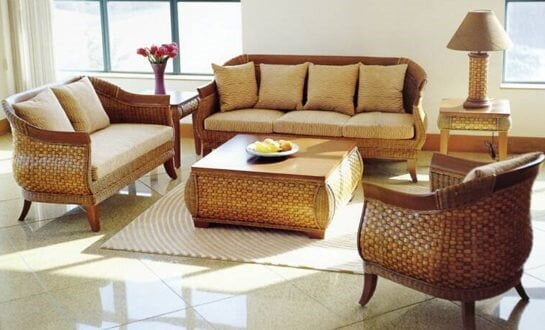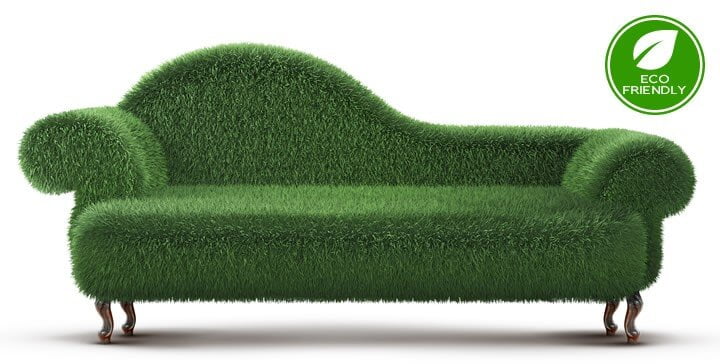

Economy
How To Make Durable, Stylish Eco-Friendly DIY Furniture
Going green is not limited to environmental conservation alone. Eco-friendly DIY furniture is one of the hottest trends in home furnishing. It seems fewer and fewer people want to put additional burden on the earth as most of us are now aware of the interconnectedness between the environment and ourselves.
This situation today is in stark contrast to the early 20th century; uncontrolled development has led to a diminishing number of forests, thus threatening the survival of plants, animals, human beings, and other species that depend on them.
That is why an increasing number of furniture designers have shifted towards eco-friendly furnishing by incorporating green furniture. This shift, however, doesn’t mean you need to forgo your creativity or your sense of style.
Eco-friendly materials for your furniture
It all starts with the type of materials your furniture is made of.
FSC-Certified Wood
The world needs trees to produce oxygen, absorb carbon dioxide, provide habitat for different species, and keep the soil intact. If we destroy these forests to generate timber, we are messing up the ecosystem. That said, there are eco-friendly ways to harvest timber. These include wood harvested from tree farms, commercial forests and reclaimed wood. The Forest Stewardship Council (FSC) is providing standard certification that promotes sustainable harvesting of wood, so making furniture with FSC-certified wood is a step towards a better planet.
Bamboo
Most people may not know that bamboo is a grass, not a tree. It is one of the most popular choice for environmental designers. Bamboo grows incredibly fast (about 3 to 5 years to mature), and it is very strong which is why mature bamboo is one of the most eco-friendly furniture material. While bamboo is more widespread than timber, you should still pay attention when sourcing the material. About one billion people and thousands of endangered animals depend on it. It’s an excellent wood alternative, but not without consequences by any means.
Reclaimed Materials
Reclaimed wood comes from discarded wood, which can be used to make beautiful pieces of furniture. Most of the reclaimed wood comes from used furniture or flawed wood, while some comes from logs on the river banks that were floated downstream but never reached the destination. Regardless of how the wood was reclaimed, constructing furniture out of reclaimed wood is a good example of resource efficiency. Although you may think that sounds difficult, woodworking tools nowadays are getting better and better, so you can use any type of wood or any size, and just join it together with a professional biscuit joiner, and no one would be the wiser.
Recyclable Materials
More and more designers are making furniture out of recycled plastics and metals. Recycled materials often require less energy and resources to process. With improved technology, recycling these materials will produce nearly the same quality as original plastic or metal. With that being said, plastic furniture is not durable, almost impossible to repair, and most recycling facilities don’t accept plastic furniture.
Principles for making durable and eco-friendly furniture

While sorting through production methods, materials, and life cycle assessments requires a lot of effort, there are some general principles to help you make stylish and sustainable furniture.
- Neutral or positive social impact (fair made, fair trade), and minimal carbon footprint for production methods. Furniture that is made of recycled material might appear green, but if the transportation or production processes use a large amount of energy, its value degrades.
- Low environmental impact when it comes to sourcing materials. Are the raw materials non-toxic, renewable, and recyclable? What about the processing? Does it pollute the environment? Are the processes and materials certified by 3rd party bodies such as Greenguard?
- Life cycle: Is the product biodegradable, reusable and recyclable?
- Finishes: Minimal or no non-toxic ingredients or off-gassing of fumes. Common volatile organic compounds (VOCs) that outgas from furniture are formaldehyde and flame retardants.
- Durability: Is the design enduring, and the materials used durable?
Practical tips for making eco-friendly furniture

Here is a quick rundown of cost-effective ways to make a variety of durable, eco-friendly, and aesthetically pleasing furniture.
Green furniture for the living room
The central place for most homes is the living room, so we can start with the main pieces of furniture there. Most people choose to go for upholstered furniture as it’s more comfortable. Here’s what you need to keep in mind:
- Fabric
To design eco-friendly seats, you should work with natural fabric such as linen and cotton. Unless made from recycled fiber or bottles, you should avoid synthetics such as petroleum-based polyester or vinyl (PVC). Vinyl has sticky tendencies, and it produces highly harmful dioxin. Generally, you should strive to work with untreated fabrics.
- Cushions
The inner part of most cushions are made of polyurethane foam. This plastic polymer has toxic chemicals propylene oxide (methyloxirane), toluene. The better option is natural rubber foam, also known as natural latex. To ensure there is no trace of chemicals use Dunlop latex.
- Leather
While leather is an animal product, it is durable and stylish upholstery material. Needless to say, if you are a vegan, you can avoid this. When selecting leather, keep in mind that a majority of leather production processes employs toxic chemicals such as chromium in the tanning process. Vegetable tanned leathers are ideal. Also, working with vintage or used leather is a better compromise.
- Frames
Recyclable frames designed for longevity are preferable. When buying these products look for salvaged or reclaimed timber or recycled steel. Also, check for certification such as Forest Stewardship Council.
Eco-friendly furniture for the dining room
Just like how sofas are the main focus in the living room, dining table and chairs constitute the focal point in the dining room. Avoid tables made from plastics such as polyacrylates, polyethylene, and polycarbonates.
The ideal choices for dining sets are certified or salvaged wood, glass, or metal. When designing plastic chairs give priority to solid construction because there is a lot of wear through daily use. Vintage or ‘pre-loved’ furniture is preferable for the dining room.
For Cabinets & Occasional Furniture
Shelving, TV cabinets and storage are pieces of furniture found not only in the living room but also in various parts of our homes. Eco-friendly storage and cabinetry are made of salvaged or reclaimed wood. They are also painted or glued using low or no-VOC finishes. It is recommended to check for FSC and Greenguard certifications. For coffee tables, you may want to use vintage, recycled or salvaged wood, or stick with metal.
Bedroom Furniture
For bedroom furniture, think minimalism with an aesthetic twist. The most important element, however, is to lower toxicity of different types of furniture. Side tables and dressers provide an opportunity to introduce creativity. Consider vintage, salvaged three trunks, wine crates, or handcrafted stools.
Whatever your choice of material, be conscious of the environment. The future of our planet depends on our actions today.


 Environment10 months ago
Environment10 months agoAre Polymer Banknotes: an Eco-Friendly Trend or a Groundswell?

 Environment12 months ago
Environment12 months agoEco-Friendly Home Improvements: Top 7 Upgrades for 2025

 Features9 months ago
Features9 months agoEco-Friendly Cryptocurrencies: Sustainable Investment Choices

 Features10 months ago
Features10 months agoEco-Friendly Crypto Traders Must Find the Right Exchange





























